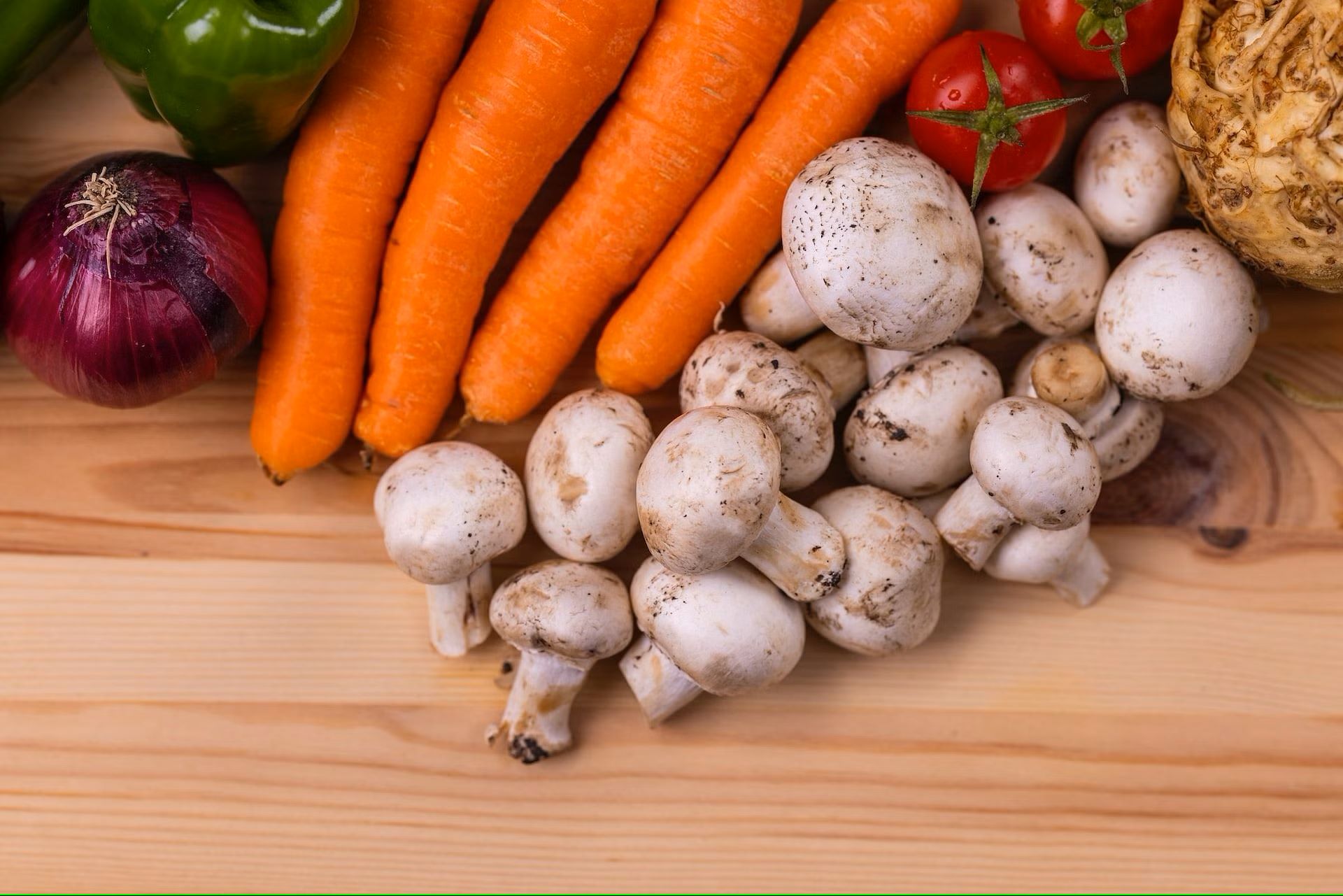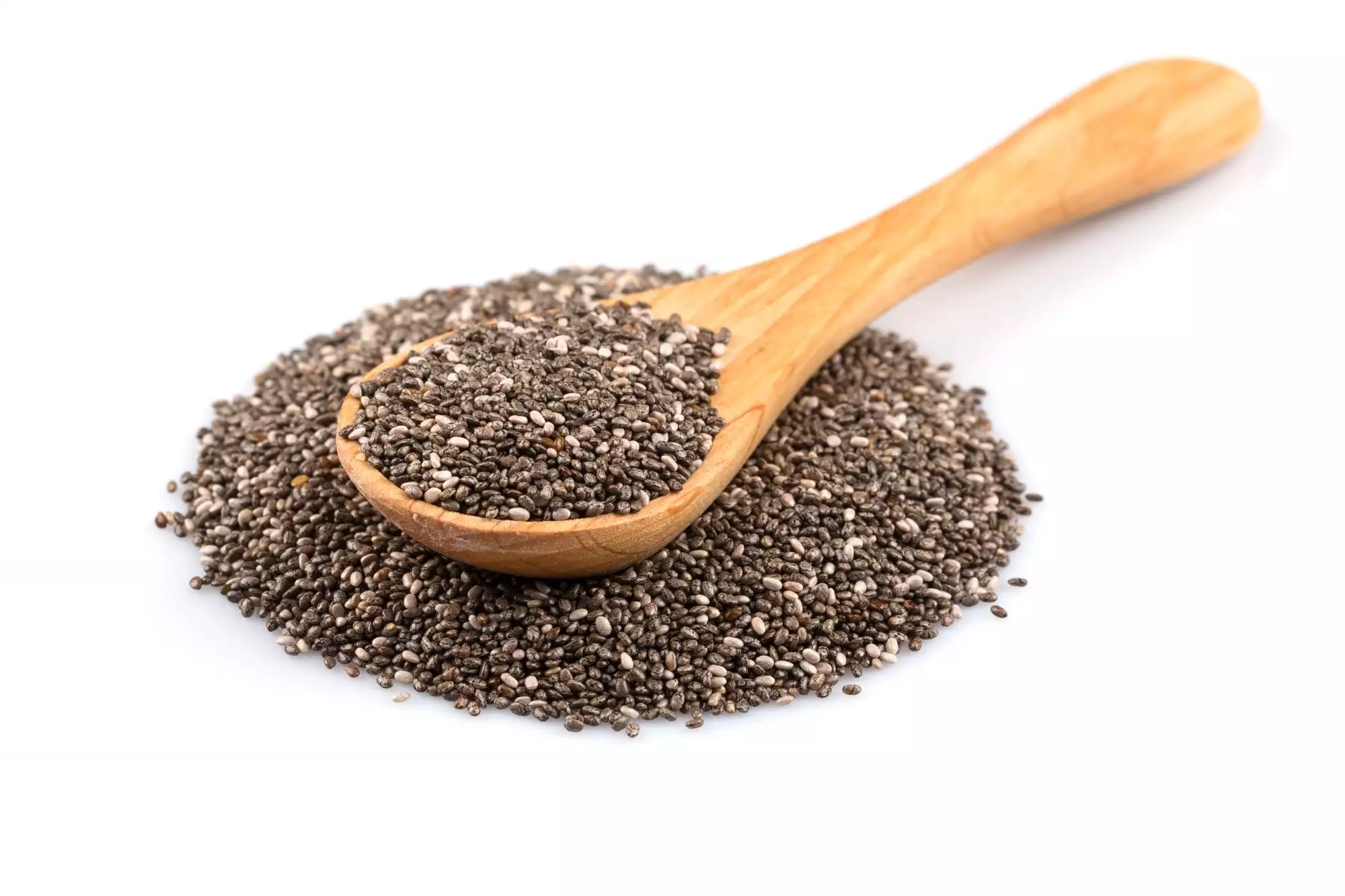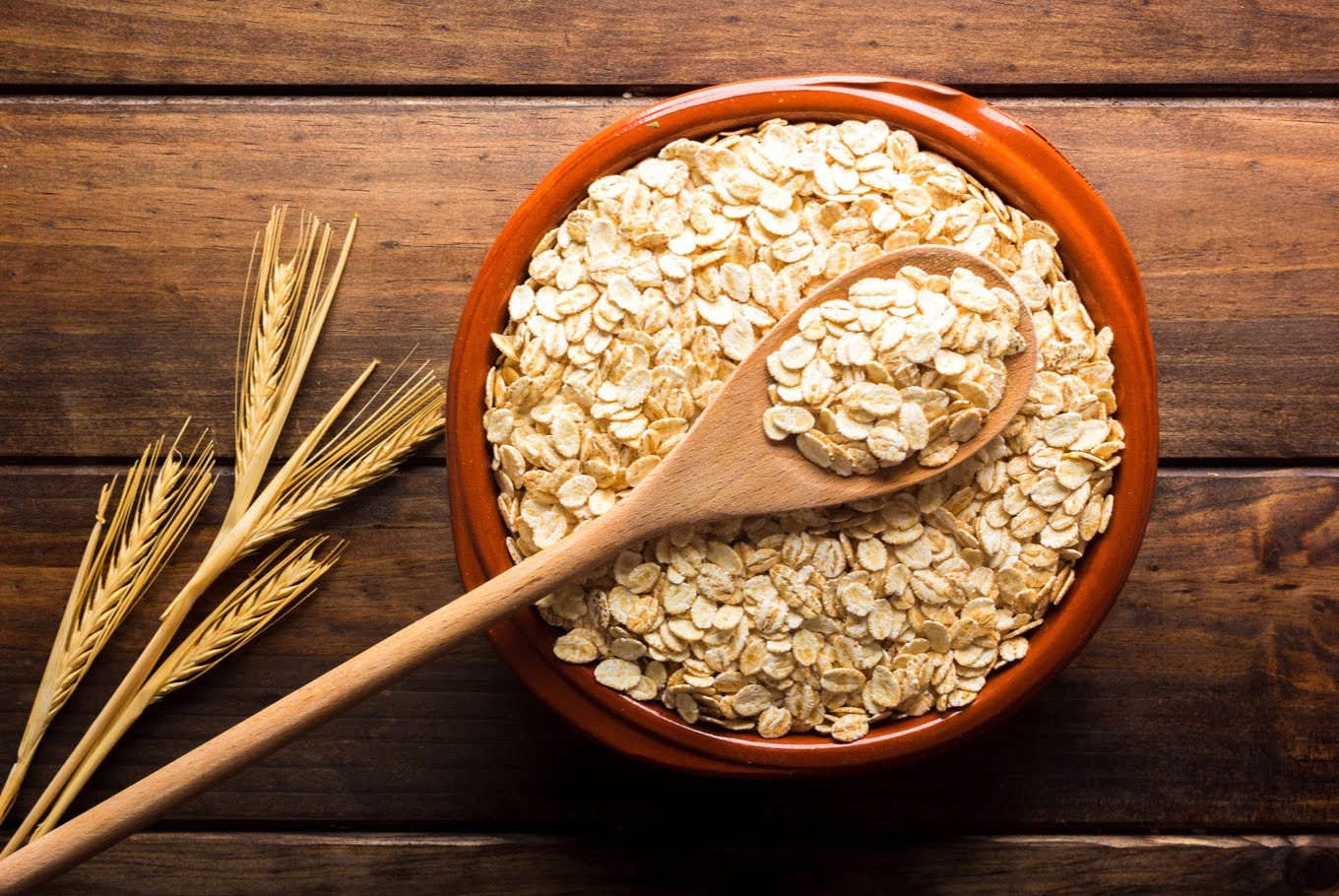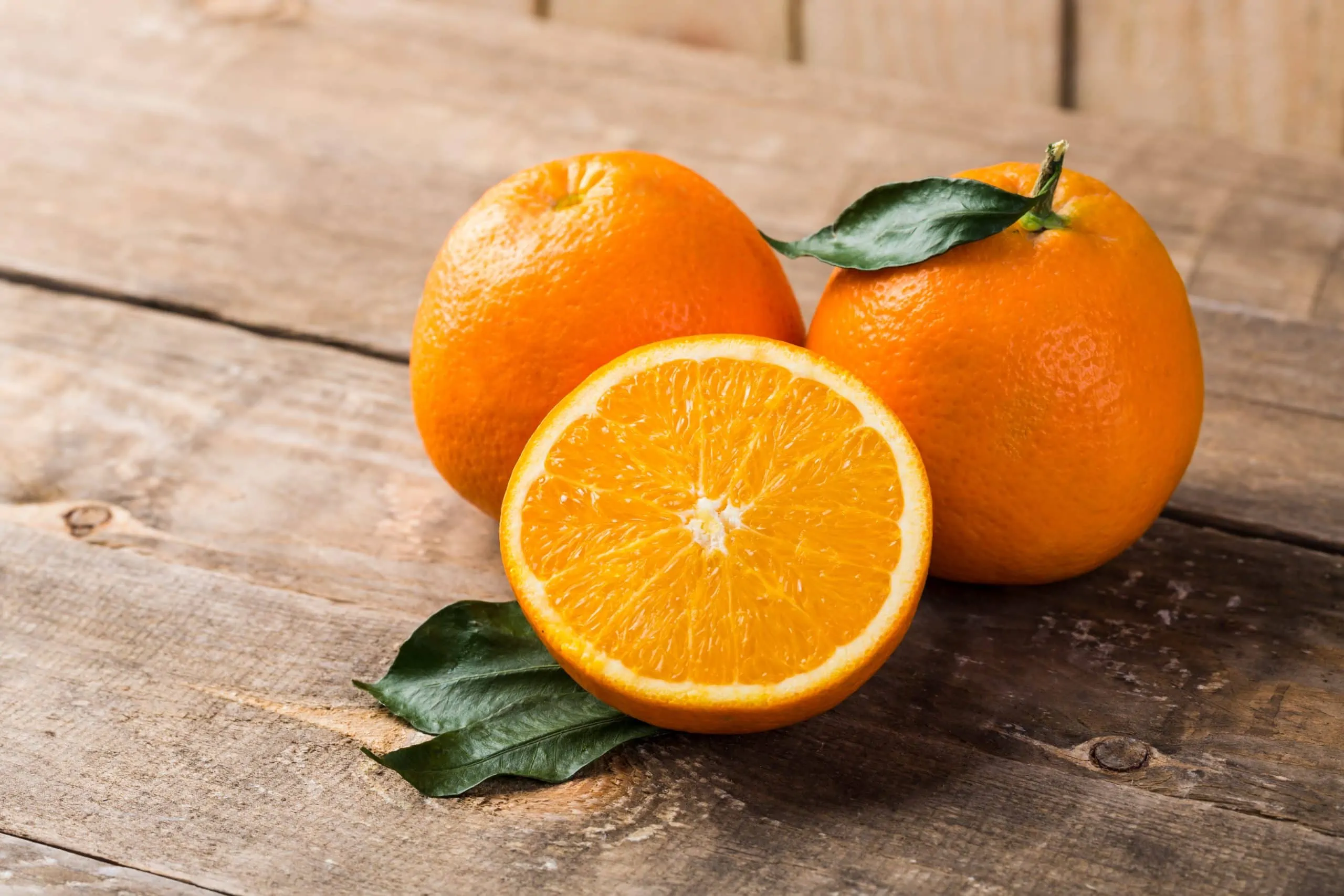Home>Gardening News and Trends>Latest News>What Vegetables Have Protein
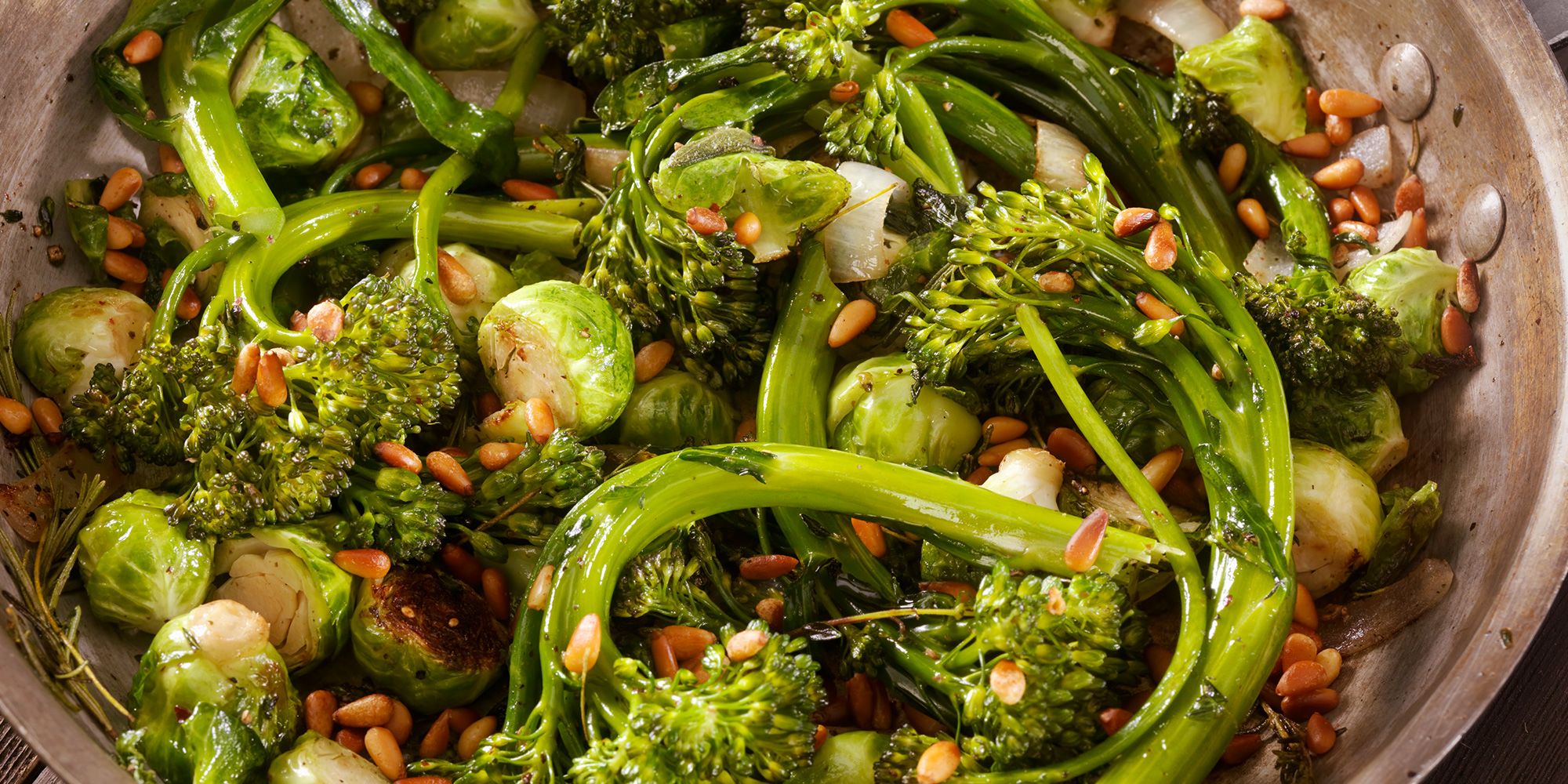

Latest News
What Vegetables Have Protein
Modified: January 22, 2024
Discover the Latest News on Protein-Rich Vegetables. Learn which vegetables are packed with protein and incorporate them into your diet for a healthy lifestyle.
(Many of the links in this article redirect to a specific reviewed product. Your purchase of these products through affiliate links helps to generate commission for Chicagolandgardening.com, at no extra cost. Learn more)
Table of Contents
Introduction
Welcome to the world of plant-based protein! When we think of protein, our minds often go straight to animal sources like meat, dairy, and eggs. However, did you know that there are plenty of protein-rich options in the realm of vegetables? That’s right – vegetables can be an excellent source of protein, providing us with essential nutrients while also being a great choice for those following a vegetarian or vegan lifestyle.
Protein is an essential macronutrient that plays a crucial role in building and repairing tissues, supporting the immune system, and maintaining overall health. While animal sources have traditionally been the go-to for protein, more and more people are recognizing the benefits of incorporating plant-based protein into their diets.
Not only are vegetables packed with protein, but they also offer a host of other vitamins, minerals, and antioxidants that are vital for our well-being. Including protein-rich vegetables in your diet can help you meet your nutritional needs while adding variety and flavor to your meals.
In this article, we will explore a list of protein-rich vegetables that deserve a spot on your plate. These vegetables not only provide a substantial amount of protein but are also delicious and versatile, making them a great addition to any diet. Whether you’re a vegetarian, vegan, or simply looking to reduce your meat intake, these protein-packed vegetables will keep you satisfied and nourished.
The Importance of Protein in Vegetables
Protein is often referred to as the building block of life, and for good reason. It is an essential nutrient that plays a vital role in various bodily functions. While it is commonly associated with animal products, it is important to acknowledge the significant contribution that vegetables can make to our protein intake.
One of the main advantages of obtaining protein from vegetables is the reduced intake of saturated fat and cholesterol compared to animal sources. Plant-based proteins are typically lower in fat and rich in fiber. This combination has numerous health benefits, including improving heart health, maintaining a healthy weight, and reducing the risk of chronic diseases such as diabetes and certain cancers.
Vegetable sources of protein also provide a wide range of vitamins, minerals, and antioxidants that are essential for optimal health. These nutrients, including folate, vitamin C, and potassium, work in synergy with protein to support various bodily functions. For example, vitamin C aids in collagen production, which is important for the health and elasticity of our skin, while potassium is crucial for maintaining proper nerve and muscle function.
Furthermore, plant-based proteins often contain phytochemicals, which are bioactive compounds found in plants that offer numerous health benefits. These phytochemicals have antioxidant and anti-inflammatory properties, which can help reduce the risk of chronic diseases and promote overall well-being.
Another point worth considering is the environmental impact of choosing plant-based protein sources. Animal agriculture is a significant contributor to greenhouse gas emissions, deforestation, and water pollution. By incorporating protein-rich vegetables into our diets, we can reduce our ecological footprint and contribute to a more sustainable food system.
Lastly, let’s not forget about taste and variety. With so many protein-rich vegetables available, there’s no shortage of options to satisfy our taste buds and culinary creativity. From hearty legumes like lentils and chickpeas to vibrant green vegetables like spinach and kale, the world of plant-based proteins offers a myriad of flavors and textures that can be incorporated into a wide range of dishes.
Incorporating protein-rich vegetables into our diet is not only beneficial for our health but also for the health of the planet. By diversifying our protein sources and embracing the wealth of nutritious options available, we can take a step towards a more sustainable and balanced diet.
List of Protein-Rich Vegetables
Now that we understand the importance of incorporating vegetables as a source of protein, let’s explore some of the top contenders that pack a powerful protein punch. These protein-rich vegetables will not only add a delicious twist to your meals but also provide the essential nutrients your body needs.
- Edamame: Edamame, young soybeans, are a fantastic plant-based protein source, containing around 18 grams of protein per cup. They also boast an impressive amount of fiber, folate, and vitamin K.
- Lentils: Lentils are a nutritional powerhouse, delivering around 18 grams of protein per cooked cup. These versatile legumes are also rich in fiber, iron, and folate, making them a great addition to soups, salads, and stews.
- Chickpeas: Chickpeas, also known as garbanzo beans, are a staple in many cuisines and contain approximately 15 grams of protein per cooked cup. These legumes are not only protein-packed but also provide a good amount of fiber, iron, and manganese.
- Spinach: Popeye knew what he was talking about when he emphasized the benefits of spinach. Along with being an excellent source of iron and calcium, spinach boasts around 5 grams of protein per cooked cup. Add it to your salads, stir-fries, or smoothies for a nutritious boost.
- Broccoli: Beyond its vibrant green color and unique texture, broccoli offers approximately 3 grams of protein per cooked cup. It is also high in various vitamins and minerals, including vitamin C, vitamin K, and folate, making it an excellent addition to any meal.
- Brussels Sprouts: Brussels sprouts are not only adorable mini-cabbages but also a significant source of plant-based protein, delivering about 4 grams per cooked cup. These little gems also provide fiber, vitamins A and C, and cancer-fighting antioxidants.
- Asparagus: Asparagus not only adds a touch of elegance to your plate but also offers a solid protein content of around 3 grams per cooked cup. Additionally, asparagus is a rich source of dietary fiber, folate, and vitamins A, C, and K.
- Artichokes: Although artichokes are often enjoyed as a dip base, they are also a surprising source of protein, with approximately 4 grams per cooked cup. These delicious vegetables are also packed with fiber, antioxidants, and other nutrients that promote gut health and digestion.
- Green Peas: Don’t underestimate the power of peas! With around 8 grams of protein per cooked cup, green peas are a versatile and nutritious addition to soups, salads, and stir-fries. They are also a good source of fiber, vitamin C, and vitamin A.
- Kale: Dubbed a superfood, kale is not only high in vitamins A, C, and K but also provides an impressive 3 grams of protein per cooked cup. Whether enjoyed in salads, sautéed, or blended into smoothies, kale adds a nutritious boost to any meal.
These protein-rich vegetables are just the tip of the iceberg when it comes to the vast array of options available. By incorporating these plant-based proteins into your diet, you can enjoy delicious and nutritious meals while meeting your protein needs without relying solely on animal sources.
Edamame
Edamame, commonly served as an appetizer at Japanese restaurants, is not only delicious but also a nutritional powerhouse. These young soybeans are protein-rich and offer a wide range of health benefits.
One cup of cooked edamame contains approximately 18 grams of protein, making it an excellent source of plant-based protein. It also provides a good amount of dietary fiber, essential for promoting healthy digestion and maintaining stable blood sugar levels.
Edamame is also packed with various vitamins and minerals. It is a notable source of folate, vitamin K, and vitamin C. Folate plays a crucial role in DNA synthesis and cell division, while vitamin K is essential for blood clotting and bone health. Vitamin C, on the other hand, is a powerful antioxidant that boosts the immune system and promotes collagen production.
Furthermore, edamame is rich in manganese, which is important for metabolism and bone development, as well as iron, which helps transport oxygen throughout the body. It also provides a good amount of potassium, magnesium, and phosphorus, which support proper muscle function and maintain healthy blood pressure levels.
Adding edamame to your diet is not only beneficial for protein intake but can also support weight management. The high protein and fiber content can help increase feelings of fullness and reduce cravings, making it an excellent snack or addition to meals for those looking to maintain a healthy weight.
There are various ways to enjoy edamame. You can simply boil or steam the pods until tender and sprinkle them with a pinch of salt for a simple and satisfying snack. Edamame can also be tossed into salads, stir-fries, or pasta dishes to add a pop of color, texture, and protein. Alternatively, you can even try using pureed edamame as a base for dips or spreads.
So, the next time you’re looking for a protein-packed and nutrient-dense snack or ingredient, consider reaching for a bowl of edamame. With its delicious taste and impressive nutritional profile, it’s no wonder why it’s a popular choice for those looking to add plant-based protein to their diet.
Lentils
Lentils, small but mighty legumes, are a fantastic source of plant-based protein and offer a wide range of health benefits. These versatile legumes have been a staple in many cuisines around the world for centuries.
A cooked cup of lentils provides approximately 18 grams of protein, making it a protein powerhouse for both vegetarians and vegans. This substantial protein content, combined with their low-fat and high-fiber nature, makes lentils an ideal choice for weight management and maintaining stable blood sugar levels.
In addition to protein, lentils are an excellent source of dietary fiber, which promotes a healthy digestive system and reduces the risk of chronic diseases such as heart disease and type 2 diabetes. The high fiber content also helps increase satiety, making you feel fuller for longer periods and potentially aiding in weight loss or weight maintenance.
Lentils are also packed with an array of other essential nutrients. They are rich in iron, which is vital for producing red blood cells and preventing iron-deficiency anemia. Additionally, lentils are abundant in folate, B vitamins, and magnesium, all of which play essential roles in energy production, heart health, and maintaining proper nerve and muscle function.
From a culinary perspective, lentils are incredibly versatile and can be used in various dishes. They can be cooked and added to soups, stews, salads, and curries, providing a hearty texture and enhancing the flavor profile. Lentil-based spreads or patties can also be used as a plant-based alternative to meat in burgers or sandwiches.
One of the most significant advantages of lentils is their affordability and accessibility. They are widely available in most grocery stores and can be purchased dried or canned, making them a convenient pantry staple for quick and nutritious meals.
Whether you’re looking for a protein-rich ingredient, a meat substitute, or a nutrient-dense addition to your meals, lentils are an excellent choice. With their impressive nutritional profile, versatility, and affordability, they deserve a prominent place in your kitchen and on your plate.
Chickpeas
Chickpeas, also known as garbanzo beans, are a beloved legume and a fantastic source of plant-based protein. These versatile and delicious beans have a rich history in cuisines all over the world.
One cooked cup of chickpeas contains approximately 15 grams of protein, making it an excellent choice for those looking to increase their protein intake. This high protein content, along with their fiber-rich nature, helps promote feelings of fullness, aids in weight management, and supports stable blood sugar levels.
In addition to protein, chickpeas offer a range of other health benefits. They are full of dietary fiber, which aids in digestion, helps maintain a healthy gut microbiome, and reduces the risk of chronic diseases such as heart disease and type 2 diabetes.
Chickpeas also provide a wealth of essential nutrients. They are rich in iron, which is important for red blood cell production and preventing iron-deficiency anemia. Chickpeas are also high in folate, magnesium, potassium, and vitamin B6, all of which play vital roles in energy metabolism, heart health, and maintaining proper nerve and muscle function.
One of the most beloved aspects of chickpeas is their versatility in the kitchen. They can be used in a variety of dishes, from classic hummus and falafel to curries, stews, and salads. Chickpea flour, derived from ground chickpeas, can be used as a gluten-free substitute for baking or to make savory crepes and pancakes.
Moreover, chickpeas can be transformed into a creamy, nutritious hummus, which serves as a delicious spread for sandwiches or a dip for vegetables and crackers. Roasted chickpeas make for a crunchy and protein-packed snack, and their neutral flavor allows for endless seasoning combinations to suit every palate.
From a sustainable perspective, cultivating chickpeas has a lower environmental impact compared to animal protein sources. They require less water, produce fewer greenhouse gas emissions, and contribute to soil health by providing necessary nitrogen content.
With their exceptional nutritional profile, versatility, and sustainability, chickpeas are a wonderful addition to any diet. Whether you’re a vegetarian, vegan, or simply looking to incorporate more plant-based protein into your meals, chickpeas are a nutritious and delicious choice.
Spinach
Spinach, a versatile leafy green, is not only packed with essential vitamins and minerals but also surprisingly rich in protein. This nutrient-dense vegetable offers a range of health benefits and can be easily incorporated into a variety of dishes.
While spinach may not be the first vegetable that comes to mind when thinking about protein sources, it contains approximately 5 grams of protein per cooked cup. This makes it an excellent addition to any meal, especially for those following a plant-based or vegetarian diet.
In addition to protein, spinach is high in dietary fiber, which promotes digestive health and aids in weight management. It also contains a wealth of vitamins and minerals, including vitamin C, vitamin K, iron, calcium, and folate.
Vitamin C, a powerful antioxidant, supports the immune system and promotes healthy skin. Vitamin K is essential for blood clotting and supporting bone health. Iron is crucial for transporting oxygen throughout the body, and calcium is vital for maintaining strong bones and teeth. Folate, on the other hand, plays a crucial role in DNA synthesis and cell division.
Furthermore, spinach contains various antioxidants and phytochemicals that have been shown to reduce the risk of chronic diseases, such as heart disease and certain types of cancer. These bioactive compounds protect against oxidative stress and inflammation, supporting overall health.
When it comes to incorporating spinach into your meals, the possibilities are endless. It can be enjoyed raw in salads, sautéed as a side dish, blended into smoothies, or added to soups, stews, and sauces. Its mild taste and tender texture make it easy to incorporate into a wide range of recipes.
Spinach is readily available in most grocery stores and can be enjoyed year-round. For those looking to increase their protein intake, spinach pairs well with other protein-rich ingredients such as legumes, tofu, nuts, or seeds.
So next time you’re looking for a nutrient-packed vegetable to add to your plate, don’t forget about spinach. With its protein content, vitamins, minerals, and antioxidants, it’s an excellent choice for overall health and well-being.
Broccoli
Broccoli, with its vibrant green florets and crunchy stalks, is not only a versatile vegetable but also a surprising source of protein. Packed with essential nutrients, broccoli is a fantastic addition to any balanced diet.
Though not typically known as a high-protein vegetable, broccoli provides approximately 3 grams of protein per cooked cup. While this may seem modest, when combined with its other nutritional benefits, it becomes clear why broccoli is regarded as a nutritional powerhouse.
In addition to protein, broccoli is rich in dietary fiber, which aids in digestion, promotes feelings of fullness, and helps maintain stable blood sugar levels. It is also a great source of vitamins and minerals, including vitamin C, vitamin K, folate, and potassium.
Vitamin C, a powerful antioxidant, supports the immune system and promotes collagen production, which helps maintain the health of the skin and other connective tissues. Vitamin K is essential for blood clotting and maintaining bone health, while folate is important for DNA synthesis and cell division.
Broccoli is also a significant source of phytochemicals, including sulforaphane, which has been linked to various health benefits. Sulforaphane is known for its antioxidant and anti-inflammatory properties and has been studied for its potential cancer-fighting properties.
From a culinary perspective, broccoli is incredibly versatile. It can be enjoyed raw in salads, steamed as a side dish, roasted for added flavor and crunch, or stir-fried with other vegetables and protein sources for a quick and nutritious meal.
When selecting broccoli, look for vibrant green florets and firm stalks. To preserve its nutritional content, it’s best to cook broccoli lightly, either steaming or quickly sautéing it. Overcooking can lead to nutrient loss.
Broccoli is easily accessible year-round and is widely available in grocery stores. Including broccoli in your regular meals can help add variety, texture, and a host of essential nutrients to your diet.
So, whether you’re looking to increase your protein intake, boost your vitamin and mineral intake, or simply add more vegetables to your meals, don’t underestimate the nutritional value of broccoli. With its protein content, fiber, vitamins, minerals, and antioxidants, it’s a nutritious and delicious choice for any meal.
Brussels Sprouts
Brussels sprouts, often misunderstood but full of flavor, are a powerhouse vegetable that packs a surprising amount of protein. These small, vibrant green cruciferous vegetables offer a range of health benefits and make a great addition to any meal.
For a cooked cup of Brussels sprouts, you can expect to consume about 4 grams of protein. While this may not seem like much, when coupled with their other nutritional properties, Brussels sprouts prove to be a valuable protein source.
Not only are Brussels sprouts a source of protein, but they are also high in dietary fiber. Fiber promotes healthy digestion, aids in maintaining a healthy weight, and supports stable blood sugar levels. It also contributes to feelings of fullness, preventing overeating.
Brussels sprouts are rich in vitamins and minerals as well. They are an excellent source of vitamin C, vitamin K, and folate. Vitamin C acts as a potent antioxidant, supporting the immune system and promoting collagen production. Vitamin K is essential for blood clotting and maintaining bone health, while folate is important for DNA synthesis and cell division.
These mini-cabbages are also packed with antioxidants like glucosinolates, which have been linked to numerous health benefits. Glucosinolates break down into compounds with anti-inflammatory and anti-cancer properties, making Brussels sprouts a valuable addition to a healthy diet.
Cooking Brussels sprouts can be done in various ways to suit different tastes. They can be roasted to bring out their natural sweetness, sautéed with garlic for a savory side dish, or even shaved and enjoyed raw in salads for a refreshing crunch.
When selecting Brussels sprouts, look for firm, tightly packed heads. Avoid ones that are discolored or have loose leaves. It’s also important not to overcook them to maintain their nutritional value.
So, whether you’re aiming to increase your protein intake or simply looking for a nutrient-dense vegetable to add to your meals, don’t overlook the potential of Brussels sprouts. With their protein content, fiber, vitamins, minerals, and antioxidants, Brussels sprouts bring both flavor and nutrition to the table.
Asparagus
Asparagus, with its distinct flavor and tender texture, is a delicious vegetable that offers more than just its unique taste. Surprisingly, asparagus is also a source of protein, making it a valuable addition to any dish.
For each cooked cup of asparagus, you can enjoy approximately 3 grams of protein. While it may not be as high in protein as some other vegetables, its nutritional value extends beyond protein content.
Asparagus is an excellent source of dietary fiber, promoting healthy digestion and helping to manage weight. It is also rich in vitamins and minerals, including vitamin K, vitamin C, and folate.
Vitamin K, in particular, is crucial for blood clotting and maintaining bone health. Vitamin C acts as an antioxidant, supporting the immune system and promoting collagen production. Folate is essential for DNA synthesis and cell division.
Rich in antioxidants, such as glutathione and rutin, asparagus offers various health benefits. Antioxidants help combat oxidative stress and reduce the risk of chronic diseases, including heart disease and certain types of cancer.
Asparagus can be prepared in numerous ways to suit different tastes and meal preferences. It can be roasted, grilled, steamed, or sautéed with other vegetables and protein sources. Asparagus spears can also be wrapped in bacon or prosciutto for a flavorful appetizer or side dish.
When selecting asparagus, opt for spears with firm and bright green stalks. Avoid wilted or discolored asparagus, as they may not be as fresh.
Including asparagus in your meals not only adds a touch of elegance and flavor but also provides essential nutrients. Whether you’re looking to increase your protein intake or simply seeking a nutritious vegetable to add to your diet, asparagus is a versatile and healthy choice.
Artichokes
Artichokes, although often enjoyed as a dip or topping, are more than just a tasty treat. These unique vegetables also provide a surprising amount of protein, making them a nutritious addition to any meal.
A cooked cup of artichoke hearts contains approximately 4 grams of protein. While this may not seem like much, artichokes offer various other health benefits that make them worth considering as a protein source.
Artichokes are an excellent source of dietary fiber, which supports digestion and helps maintain a healthy gut. They are also packed with essential vitamins and minerals, including vitamin C, vitamin K, and folate.
Vitamin C acts as an antioxidant, boosting the immune system and promoting collagen production. Vitamin K is essential for blood clotting and plays a significant role in bone health. Folate, on the other hand, is crucial for DNA synthesis and cell division.
Furthermore, artichokes are rich in antioxidants such as cynarin and silymarin, which help protect the liver and support overall liver health. They also contain compounds that have been shown to have anti-inflammatory properties, potentially reducing the risk of chronic diseases.
Artichokes can be enjoyed in various ways. They can be steamed, boiled, roasted, or barbecued, offering different flavor profiles and textures. Artichoke hearts can be added to salads, pasta dishes, or pizzas, providing a delicious and nutritious addition.
When selecting artichokes, look for those with tightly closed leaves and a vibrant green color. Avoid artichokes that are discolored or have wilted leaves, as they may be past their prime.
So, next time you’re exploring different protein sources, consider adding artichokes to your meal. Their protein content, along with their fiber, vitamins, minerals, and antioxidants, make them an excellent choice for maintaining a balanced and nourishing diet.
Green Peas
Green peas, small but mighty, are not only a beloved vegetable but also a surprising source of protein. These vibrant and sweet legumes offer a range of health benefits and can be enjoyed in a variety of dishes.
A cooked cup of green peas contains approximately 8 grams of protein, making them a noteworthy plant-based protein source. Along with their protein content, green peas are also rich in dietary fiber, which supports healthy digestion and helps to maintain a stable blood sugar level.
In addition to protein and fiber, green peas provide a range of essential vitamins and minerals. They are a good source of vitamin C, vitamin A, and folate, which are crucial for immune function, vision health, and cell division.
Green peas are also a great source of micronutrients, including iron, which plays a vital role in oxygen transportation throughout the body. They also contain potassium, magnesium, and phosphorus, which are necessary for proper muscle and nervous system function.
Moreover, green peas offer a diverse range of antioxidants, such as flavonoids and carotenoids, which help protect the body against oxidative stress and reduce the risk of chronic diseases.
Green peas can be enjoyed in various ways. They can be incorporated into soups, stews, and curries, or used as a side dish, either steamed or sautéed. Additionally, they make a flavorful addition to salads, stir-fries, and pasta dishes.
When selecting green peas, look for fresh and bright green pods. If purchasing frozen peas, ensure they are free of ice crystals and uniform in color and size.
Whether you’re looking to increase your protein intake or simply seeking to add more variety to your meals, green peas are a nutritious and versatile vegetable. With their protein content, fiber, vitamins, minerals, and antioxidants, green peas are a fantastic choice for promoting overall health and well-being.
Kale
Kale, the superstar among leafy greens, is not only incredibly nutritious but also surprisingly high in protein. With its robust flavor and unique texture, kale offers a multitude of health benefits that make it a popular choice among health-conscious individuals.
One cooked cup of kale delivers approximately 3 grams of protein, making it an excellent source of plant-based protein. Coupled with its low-calorie and high-fiber nature, kale is a great addition to any diet, especially for those looking to increase their protein intake.
In addition to protein, kale is a nutritional powerhouse. It is rich in vitamins A, C, and K, as well as minerals like calcium and iron. These nutrients play vital roles in various bodily functions, such as supporting eye health, strengthening the immune system, and aiding in oxygen transportation.
Kale is particularly renowned for its high antioxidant content. It contains flavonoids and carotenoids that help combat oxidative stress, reduce inflammation, and protect against chronic diseases such as heart disease and certain types of cancer.
Incorporating kale into your meals is easy due to its versatility. It can be enjoyed raw in salads, sautéed as a delicious side dish, blended into smoothies for a nutrient-packed boost, or even baked into kale chips as a healthy snack alternative.
When selecting kale, opt for bunches with vibrant and crisp leaves. Choose smaller leaves for a more tender texture, or larger leaves for a heartier bite. It’s also important to remove the tough ribs before cooking or eating.
Kale is widely available and can be enjoyed year-round, allowing you to add its nutritional benefits to your diet regardless of the season.
Whether you’re seeking to boost your protein intake, increase your nutrient intake, or simply add more leafy greens to your meals, kale is a fantastic choice. With its protein content, vitamins, minerals, and antioxidants, kale is a true nutritional powerhouse that can contribute to a balanced and nourishing diet.
Conclusion
In conclusion, vegetables can be an excellent source of protein, offering a wide range of health benefits and nutrients. Incorporating protein-rich vegetables into our diet is not only beneficial for meeting our nutritional needs but also for supporting overall health and well-being.
From edamame and lentils to chickpeas and spinach, the list of protein-rich vegetables is extensive. Each of these vegetables brings its unique profile of nutrients, such as fiber, vitamins, minerals, and antioxidants, that contribute to a balanced and nutritious diet.
By including vegetables as a protein source, we can reduce our intake of saturated fats and cholesterol found in animal products. Plant-based proteins also come with the added benefit of being more environmentally sustainable, with lower greenhouse gas emissions and reduced ecological impact compared to animal agriculture.
The versatility of these protein-rich vegetables allows for endless culinary possibilities. Whether added to soups, salads, stir-fries, or enjoyed on their own, these vegetables bring flavor, texture, and nourishment to our meals.
It’s important to note that while these vegetables provide protein, they may not be a complete source of all essential amino acids. However, by combining different plant-based protein sources throughout the day, it’s possible to obtain a complete amino acid profile.
Incorporating protein-rich vegetables into our diet is a wonderful way to diversify our protein sources, embrace a more plant-based lifestyle, and enjoy the many health benefits that this dietary change can offer.
So, let’s embrace the power of vegetables and explore the myriad of protein-rich options available. From edamame to kale, these vegetables not only provide a substantial amount of protein but also contribute to overall health and well-being. Let’s savor their flavors, celebrate their versatility, and nourish our bodies with the goodness they offer.


